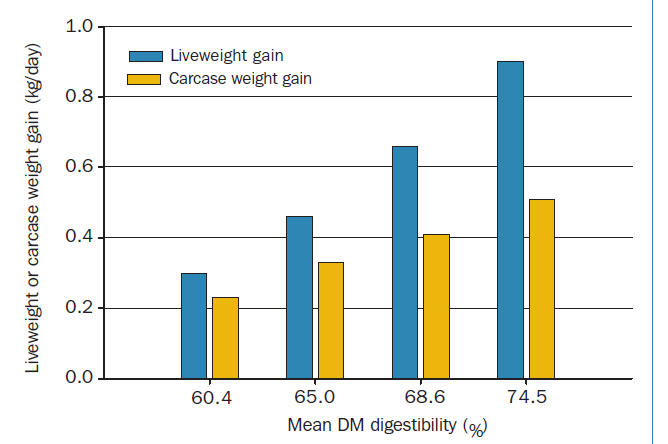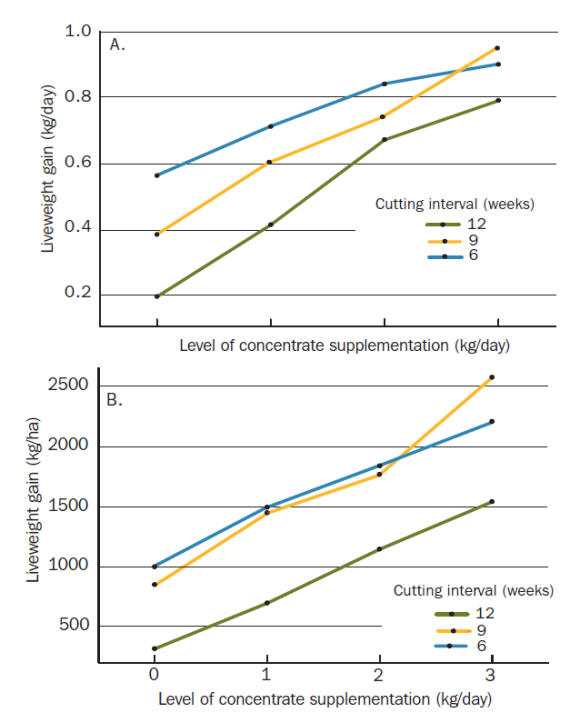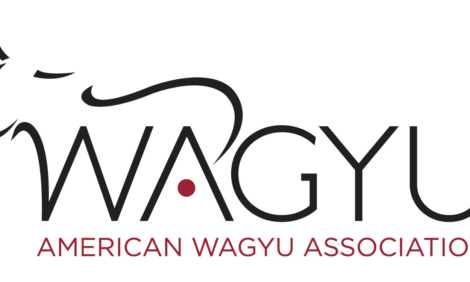



Feeding Silage to Beef Cattle
How can the use of silage in beef cattle diets effect liveweight gain and meat production? This article looks at how silage can be used in grazing enterprises to improve production per head and allow for an increase in stocking rates.Before deciding how silage will be integrated into their production system, producers need to clearly define their production and management goals.
| Table 1: Summary of the uses for silage in beef cattle diets | ||
|---|---|---|
| Class of Cattle | Feeding objectives | Comments |
| Finishing heifers and steers | Meeting the various market specifications for liveweight, finish (fat cover) and age, on time. | Silage-based diets can be used to finish cattle of various classes, including weaners, milk-fed vealers, yearlings and older cattle. Full feeding: Used in large feedlots or smaller opportunity feedlots on-farm. Proportion of silage in the diet can vary from 20 to 100% of DM. High silage quality is essential to sustain high growth rates where silage makes up a major proportion of the diet. Supplementary feeding: The quantity of silage fed will depend on the quantity and quality of pasture available. Silage quality must be high to ensure a good animal response. Check the protein status of the diet to determine whether protein supplementation is required. |
| Breeding herd | Various objectives include: • achieving satisfactory body condition at calving; • maintaining milk production and calf growth; • ensuring adequate nutrition to maintain fertility and a target calving interval of 12 months; and • reducing the risk of grass tetany. |
Silage is usually used as a supplement to pasture. The quantity required will depend on the quantity and quality of pasture available. Silage quality has to be high to ensure a good animal response. Check the protein status of the diet to determine whether protein supplementation is required. Supplementation of cows grazing young lush pasture with high-quality silage can reduce the incidence of grass tetany. |
| Weaners and feeder cattle | Maintain growth rate of young cattle to ensure they reach a satisfactory weight-for-age by the start of the finishing period. | Silage can be fed to calves as young as three months, but some supplementary concentrates are required. The quantity of silage fed will depend on the quantity and quality of pasture available, and the target growth rate. Silage quality must be high to ensure a good animal response. Check the protein status of the diet to determine whether protein supplementation is required. There are management benefits from feeding young cattle. Animals often become quieter and easier to handle, and adapt more quickly to a feedlot environment. |
| Replacement heifers | Ensure fertility to allow early joining and adequate growth rate to first calving. | The quantity of silage fed will depend on the quantity and quality of pasture available, and the target growth rate. |
| Cull cows | Improve weight, body condition and market value of cull cows. | Short-term feeding with silage can be profitable, particularly in poor season, when it is difficult to finish cows. |
| All classes | Drought feeding for survival or/ and production | Silage can provide a long-term forage reserve for drought, bushfires or floods. Targeting high quality for drought feeding reduces feeding costs. A high-quality silage also provides the option to finish cattle cost effectively during a drought. |
Types of silage
- Pasture silage: by targeting high-quality silage, with a ME content of at least 10 MJ/kg DM, liveweight gains of 0.85-1.14 kg/day can be achieved, or 104-123 kg/t silage DM, on silages produced from a range of pastures or crops.
- Whole crop cereal silages: Research has shown that barley silage can support similar cattle production to maize silage. Sowing legumes, such as field peas or vetch, with cereal crops is becoming increasingly popular as a way to boost silage protein levels when winter cereals are grown specifically for silage production.
- Summer forage crops: Good quality silage can be produced from maize and sorghums, maize has the highest quality. The potential for high ME content with maize silage enables it to support high levels of beef production. Maize can produce a ME content of 11 MJ/kg DM can allow liveweight gains of up to 1.03 kg per day. It is widely used as the forage component of feedlot diets and or as the major component of finishing rations or as a grazing supplement.
Factors affecting beef production from silage
Silage digestibility or ME content
Figure 1 shows that improved digestibility (ME content) is an important factor influencing liveweight gain per tonne of silage produced.

Growth stage at harvest is a particular factor which will also influence silage digestibility and ME. Previous research has shown that delaying the time of cut has resulted in reduced digestibility and a clear indication of lower liveweight gain. This suggests that relatively high levels of additional supplements/ grain may have to be fed if forage is cut late.
When determining the optimum growth stage to harvest pasture or crop for silage take into consideration the following:
- Yield of forage harvested for silage
- Potential silage digestibility or ME content
- Expected cattle prices (cutting later may mean higher beef production per hectare but if daily liveweight gain is lower, there may be a price penalty to consider)
- Regrowth yield - a lower silage yield from an early cut may be compensated for by higher regrowth yield
- Grain feeding
The effects of late cutting on silage digestibility and liveweight gain can be seen in Figure 2.

Silage fermentation quality
* "Silage fermentation quality - A qualitative term describing the extent to which the silage has been preserved by the desired lactic acid fermentation. Where this has been achieved, lactic acid is the dominant fermentation product and there has been minimal breakdown/degradation of protein." |
Poorly preserved silages have poor fermentation quality; they are unpalatable to stock and intake will be reduced. These silages are also likely to have suffered extensive degradation of protein, resulting in poor utilisation of the silage nitrogen by animals. With these silages, animal production will be lower than might be expected from a silage of similar ME content, but with good fermentation quality.
Research has shown that mean liveweight gain increased from 0.27 to 0.50 kg/day when silage fermentation quality was improved by either using a silage additive or by wilting. Significant improvements in intake, digestibility and liveweight gain were also noted when fermentation was improved using an formic acid additive.
When ensiling pastures of crops that are at risk of poor fermentation producers can use either wilting of silage additives to improve preservation.
Wilting and silage DM content
Wilting is an important management tool that can reduce silage effluent losses and improve silage intake. Wilting increases silage DM content thus increasing silage intake directly or indirectly.
* "Wilting - The process where moisture evaporates from the mown forage to increase DM content to the desired level for harvesting." |
Rapid wilting is proven to reduce losses during the wilting process and produce a higher quality silage. Wilting to a rate beyond 35-40 per cent has shown little increases in intake and is likely to increase field losses.
Where silage quality is likely to be poor without wilting, the response of wilting to intake and liveweight gain is greater, if silage would have been well preserved with a good fermentation quality without wilting, little effect would be seen.
Feeding grain and concentrates can make the effects of silage quality on intake and cattle production, generally reducing the response to wilting. A higher proportion of concentrates is needed to achieve satisfactory animal production on poorly preserved silages, increasing costs.
Silage additives
Additives have a number of potential roles in beef production:
- Improve the presentation of 'at risk', low DM content forages, where there is a risk of poor fermentation due to their low water soluble carbohydrates(WSC) content or high buffering capacity and where rapid and effective wilting is not possible because of weather conditions
- Even where good preservation is expected, the application of silage inoculants may still give worthwhile improvements in intake, liveweight gain and feed conversion efficiency in beef cattle
- Improve the aerobic stability (susceptibility to heating) of silage during feeding
Inoculents - There is growing evidence that inoculants (and formic acid) can improve animal production, even greater than when untreated silage is well preserved. This is likely due to the free-amino acid content of the additive-treated silage which was lower than that of the untreated silage, indicating reduced protein degradation.
Aerobic spoilage inhibitors - anaerobic spoilage is the loss of DM which occurs during prolonged exposure to air during feedout and also during storage if silage is inadequately sealed. This is common in warmers climates such as Australia. This can be reduced by adding a aerobic spoilage inhibitor additive.
Grain - When added to low DM forage at ensiling, grain can reduce effluent losses and may improve silage fermentation quality. It can also improve liveweight gains.
Chop length
Reducing chop length can increase silage intake either directly, by reducing the time required by an animal to consume and ruminate each kg of silage, or indirectly, by improving silage fermentation quality, especially with low DM silages. Research shows that shorter and medium chop lengths supported higher relative intakes. Shorter chopping also allows more effective utilisation of storage and space and improved efficiency in the handling and transportation of forage/ silages.
Feedout system
An efficient silage feedout system ensures cattle are not restricted to accessing silage and minimises waste. The best method with regard to accessibility is where short-cropped silage is fed loose in a feed trough and there is little or no competition for feeding space. The silage harvesting system often influences the type of feedout system.
Little research has been carried out looking at the effects of feedout systems on eating behaviour, intake and liveweight gain. However it is known that an easy feeding system allows high intake and liveweight gain to successfully be achieved.
Feeding silage and grain diets
Although high-quality silages alone can be used to finish cattle, they are often fed with grain. A decision on the proportion of concentrates or grain to be used in the diet will depend on:
- target growth rates required (and the ME content of the diet required to achieve it);
- the quality of silage available;
- the relative costs of silage and grain;
- the quantity of silage available;
- the availability of equipment and feeding facilities to handle high silage/ low grain diets; and
- whether the length of the finishing period ('days on feed') is an important consideration.
The higher the quality of silage, the lower the quantity of grain will be required.
Silage as a supplement to pasture
Pasture silage
Good liveweight gain responses have been observed where high-quality silage has been used to supplement poor-quality pasture. A study in Australia showed that liveweight gain increased by 0.8kg per day for each kg of silage DM consumed, when finishing steers. Silage supplements can not only increase animal production per head, but can also reduce pasture intake, allowing an increase in stocking rates. A study showed that silage feeding reduced pasture consumptions by approximately 1.1kg per kg of silage intake. The balance between stocking rate and area set aside for silage production is an important consideration in beef grazing systems.
Maize silage
When fed with urea and minerals, maize silage can support up to 1 kg a day or higher liveweight gains. It can also sustain high liveweight gains when fed in combination with pasture. Again when fed as a supplement, the liveweight gain achieved will depend on the quality and quantity of silage and the availability of pasture. Supplements of maize silage can mean a significant increase in stocking rates, whilst maintaining a similar liveweight gain per head. A study in Australia showed that on irrigated pastures, providing a maize supplement of 2.4 kg DM/ head/ day allowed a doubling of the stocking rate and increased the liveweight gain from 1.4 to 2.7 kg/ hectare/ day.
Beef producers need to not only consider production per hectare but also production per head when finishing animals to market specifications.
Protein supplements when feeding low-protein silages
When feeding maize, sorghum and whole crop cereal silages it is important to consider the risk of inadequate levels of protein in the diet. If they make up more than 30 per cent of the diet and the protein levels fall below seven percent DM then a protein supplement will likely be required.
The level and type of protein supplement will depend on the age of the animal, and the contents of the various dietary components. In a UK study it was found that the crude protein content of the maize silage was considerably higher (10.7 per cent of DM) than seen in typical Australian maize silages (6.5 per cent of DM). This higher content was sufficient for a liveweight gain in steers but younger cattle required supplementary protein. This can often be supplied as protein nitrogen through lucerne hay or less effectively, urea. Research shows that supplementary nitrogen received as protein nitrogen achieves higher liveweight gains than non protein nitrogen such as urea.
Mineral supplementation when feeding silage
If silage is a major proportion of the diet and mineral levels are low, producers need to assess the mineral status of the diet and determine whether a mineral supplement is required.
Mineral content can be influenced by soil type and fertiliser application. Strategic use of fertiliser may improve the mineral status of the forage so that purchasing mineral supplements may not be necessary.
Silage as a drought (or long-term) reserve
Silage can be a drought strategy on some beef properties. Studies have shown that it is an effective strategy when grain and roughage prices are high. When silage is only used as a drought reserve economies of scale are more difficult to achieve as overhead costs can be high when spread over a relatively small tonnage of silage.
Silage costs will be lower where it is used as part of the ongoing production feeding strategy and where it is made and fed in most years. The drought reserve can be intergrated into the normal silage production with larger quantities reserved in good years.
Although many will argue that the quality of any food in a drought is unimportant as any feed is valuable. high quality silage will allow for full production feeding, providing greater management flexibility in a drought. Silage kept as long-term drought forage reserve must be well preserved.
Silage feeding and meat quality
Diet can influence the fat deposition in a carcase which reflects the energy content of the diet. Studies have shown that the fat content of the carcase increases with the ME content of the diet. Observations from a number of studies investigating the effect of silage quality of carcase traits and meat quality said the following:
- With mixed silage/ grain diets, carcase fat colour, meat colour and marbling in yearling steers (mean carcase weights 210-220 kg) were not influenced by proportion of silage in the diet.
- Where maize silage has been used as a supplement to pasture, fat colour, meant colour and marbling were not influenced by maize silage supplements (mean carcase weights 213-263 kg).
- No taste panel tests have been conducted to appraise the eating quality of meat produced from silage fed animals. However, measurements of the physical properties of the meat from animals in the experiments showed no treatment differences. In addition, overseas studies have shown acceptable eating quality for meat from animals finished on silage-based diets.
- Studies in Australia (mean carcase weight 241-252 kg) saw that where silage and grain were compared as supplements to pasture, showed there were no effects on fat colour, meat colour or marbling.
- If animals are maintained on a poor-quality diet prior to slaughter, muscle glycogen resources can be low, and the risk of dark-coloured meat is increased. This applies to any low-quality diet, including low-quality silage.
September 2009


